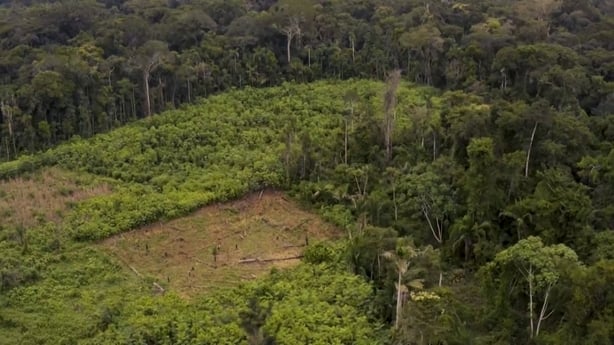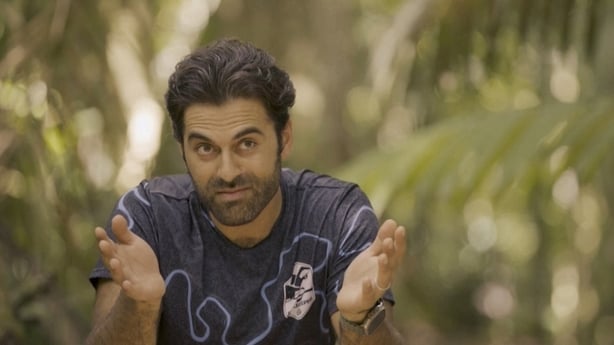A pilot project in Peru is using a robot to plant seeds to help reforestation of the Amazon, where pristine rainforest and biodiversity is being blighted by mining and logging, much of it illegal.
Ahead of World Rainforest Day on June 22, not-for-profit organisation Junglekeepers says bringing robots on board to join the fight against rainforest destruction could be a game-changer.
"The miners, the loggers... they have advanced technology. They can destroy so much," said Junglekeepers vice-president Juan Julio Duran Torres; himself a former illegal miner and logger-turned conservationist.
"If we have a robot here to help plant trees and local people can be involved and learn technology, it'll be like pretty much battling together," Torres added.

Zurich-based ABB Robotics provided a version of their popular YuMi robot to collaborate with the conservationists. First released in 2015, the YuMi dual arm robot was designed to bring automation to industry.
ABB claims this to be the most remote use of the robot. It is powered by solar panels and connected by solar satellite wifi for remote updates from an ABB base in Sweden, 12,000 kms away.
Junglekeepers took three days to transport the robot up the Las Piedras River to their base deep in the jungle of the southeastern region of Peru known as "Madre de Dios," Spanish for "Mother of God".
Once in place, the robot can work all day; carefully picking up seeds and using a small trowel to move the soil in a planter before depositing the seed and covering it up.
"This robot is incredibly agile and it's able to plant all of our seeds for our nursery, freeing up our rangers to do other tasks involving the reforestation project itself," explained Junglekeepers International CEO Mohsin Kazmi.
"The robot is able to remove soil and plant seeds all in one box, 16 at a time. And then we take that box and put it into our nursery for it to germinate."

Kazmi added that the robot can plant about 600 plants in a morning, equating to two soccer field-sized areas if planted out to combat deforestation.
Junglejkeepers uses indigenous Peruvian rangers to patrol, protect, and now, replant the Amazon, with tree saplings transported by river and by land to be planted by the team.
The conservationists are now investigating the feasibility of setting up larger-scale robot planting facilities at Amazonian communities. These would potentially allow thousands of seeds to be planted daily.
Deforestation in Peru's Amazon rainforest is largely fueled by illegal gold mining and logging, as well as forest clearance to plant coca crops - the raw ingredient for cocaine.
"The Amazon is in danger, it's not safe. It is in danger. But that's why the technology, the science and local knowledge; we have to work together in order to save the Amazon," said Peru's leading expert on the Amazon, Dennis del Castillo Torres, Programme Director, Peruvian Amazon Research Institute (IIAP).
"I am convinced that the Amazon can be saved. Absolutely."
Protecting the Amazon rainforest, where millions of indigenous people live, is considered key to the fight against climate change because of the vast amounts of planet-warming carbon dioxide it absorbs.
The Amazon is the world's largest rainforest and Peru has the second largest section of the Amazon after Brazil. Government data from Brazil shows that about three soccer fields’ worth of virgin forest was cleared every minute in 2022.

